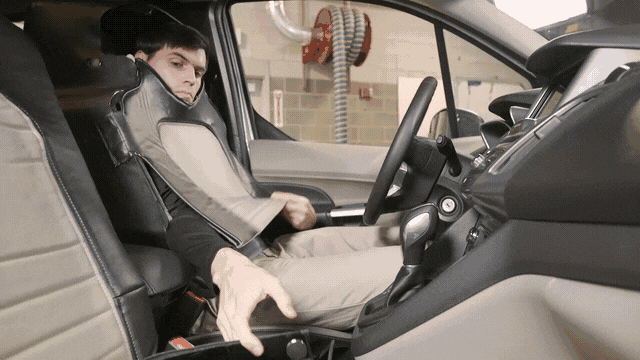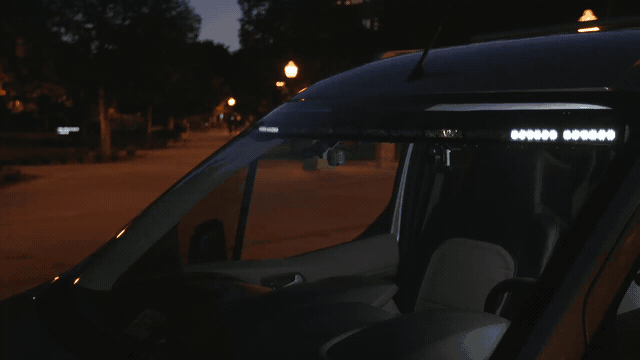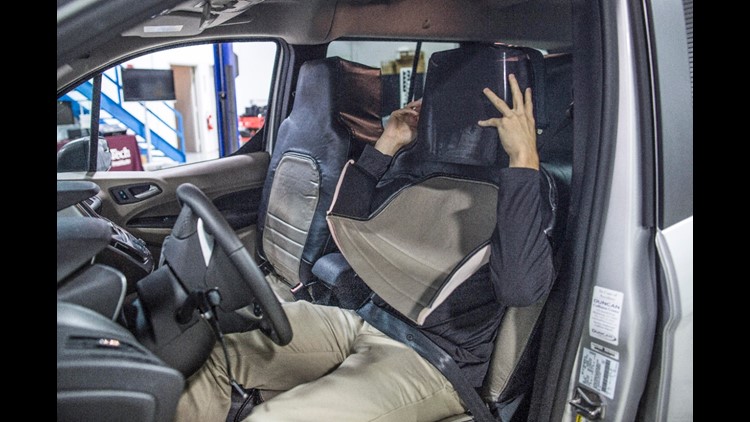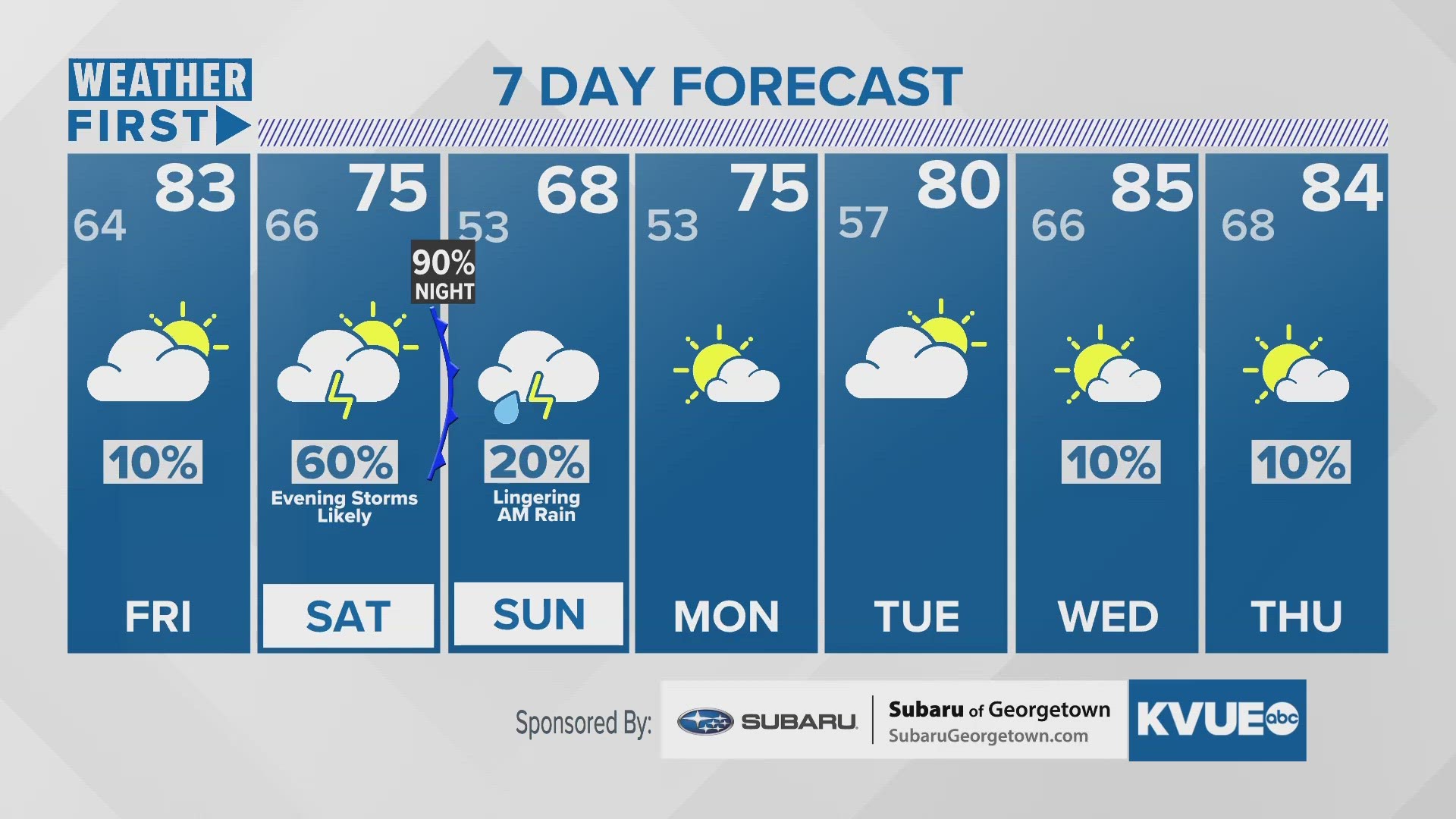A study that had many people thinking they saw a driverless car roaming the streets near Washington, D.C., was trying to figure out how self-driving vehicles could communicate with everyone else in the future.
It's a big question for automakers to tackle.
After all, a simple hand wave or head nod between drivers and pedestrians can communicate so much right now. That's not quite possible with a driverless vehicle.
Ford worked with the Virginia Tech Transportation Institute on the project and have revealed new details about what exactly they were doing.
According to a press release, the research team decided to test using lights placed on a windshield to simulate what their vehicle planned to do next. In this case, two white lights moving side to side meant it was about to come to a full stop; a solid white light would indicate a vehicle is driving autonomously; and a rapidly blinking white light means the vehicle is starting to accelerate from a stop.
In order to conceal the driver, the Virginia Tech team created a "seat suit" that made it seem like the car was driving itself. During August, they hit the road around Arlington, Va.

Based on Ford's video, and social media posts during the experiment, pedestrians seemed more perplexed than anything else.
“Understanding how self-driving vehicles impact the world as we know it today is critical to ensuring we’re creating the right experience for tomorrow,” said John Shutko, Ford’s human factors technical specialist. “We need to solve for the challenges presented by not having a human driver, so designing a way to replace the head nod or hand wave is fundamental to ensuring safe and efficient operation of self-driving vehicles in our communities.”
In total, the not-so driverless Transit Connect van collected more than 150 hours of data while driving around 1,800 miles.
While it's too soon to tell whether these light patterns will be used in the future, Ford said the project's data will be valuable to understanding if other road users change behaviors in response to self-driving vehicles and their signals.




